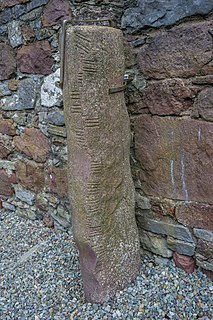
Primitive Irish or Archaic Irish, also called Proto-Goidelic, is the oldest known form of the Goidelic languages. It is known only from fragments, mostly personal names, inscribed on stone in the ogham alphabet in Ireland and western Great Britain between the 4th and the 6th century AD.

The Iverni were a people of early Ireland first mentioned in Ptolemy's 2nd century Geography as living in the extreme south-west of the island. He also locates a "city" called Ivernis in their territory, and observes that this settlement has the same name as the island as a whole, Ivernia. It was probably once the name given to all the peoples of Ireland, but by Ptolemy's time had a more restricted usage applicable to the inhabitants of the south-west. These Iverni can be identified linguistically with the Érainn, a people attested in Munster and elsewhere in the early Middle Ages.

Roughly 400 known ogham inscriptions are on stone monuments scattered around the Irish Sea, the bulk of them dating to the fifth and sixth centuries. Their language is predominantly Primitive Irish, but a few examples record fragments of the Pictish language. Ogham itself is an Early Medieval form of alphabet or cipher, sometimes known as the "Celtic Tree Alphabet".

The Corcu Duibne, which means "seed or tribe of Duibhne", was a notable kingdom in prehistoric and medieval County Kerry, Ireland which included the Dingle Peninsula, the Iveragh Peninsula and connecting lands. The tribe belonged to the Érainn and claimed descent from the legendary Conaire Mór, possibly making them distant cousins of such far off kingdoms as Dál Riata in Ulster and Scotland, as well as the closer Múscraige and Corcu Baiscind. All the tribes belonged to the Síl Conairi of legend and ultimately traced their descent from the Clanna Dedad.
Drummin fort is a ringfort and National Monument located in County Roscommon, Ireland.
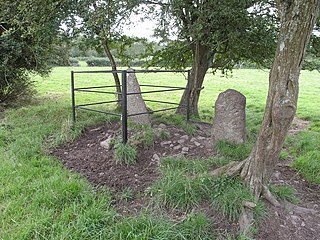
Kiltera Ogham Stones are two ogham stones forming a National Monument located in County Waterford, Ireland.
Drumlohan souterrain and ogham stones, known locally as the Ogham Cave, is a souterrain with ogham stones forming a National Monument located in County Waterford, Ireland.
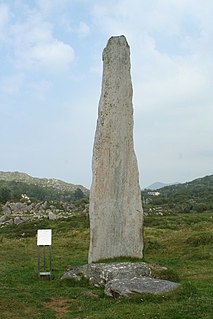
Ballycrovane Ogham Stone is an ogham stone and National Monument located in County Cork, Ireland.
Cloghanecarhan is a ringfort and ogham stone forming a National Monument located in County Kerry, Ireland.

Ratass Church is a medieval church with ogham stone inscriptions in Tralee, County Kerry, Ireland. It is a National Monument.
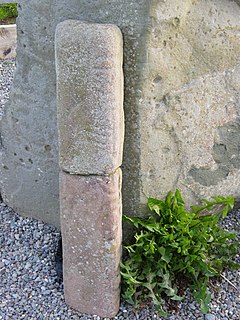
The Ardcanaght Stones are a pair of ogham stones forming a National Monument located in County Kerry, Ireland.

Dunloe Ogham Stones is a collection of ogham stones forming a National Monument located in County Kerry, Ireland.
The Tullygarran ogham stones are a pair of ogham stones forming a National Monument located in County Kerry, Ireland.
Kilcoolaght East Ogham Stones are a collection of ogham stones forming a National Monument located in County Kerry, Ireland.
The Darrynane Beg Ogham Stone is an ogham stone and a National Monument located in County Kerry, Ireland.
St. Manchan's Oratory, also called An Teampall Geal is a medieval oratory and National Monument in County Kerry, Ireland.
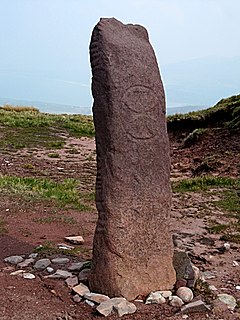
The Arraglen Ogham Stone is an ogham stone and a National Monument located in County Kerry, Ireland.

Ballywiheen is a medieval Christian site and National Monument located on the Dingle Peninsula, Ireland.
The Emlagh East Ogham Stone, also called the Priest's Stone is an ogham stone and a National Monument located in County Kerry, Ireland.
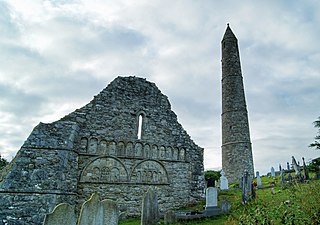
St. Declan's Monastery, containing the remains of Ardmore Cathedral, is a former monastery and National Monument located in County Waterford, Ireland.













